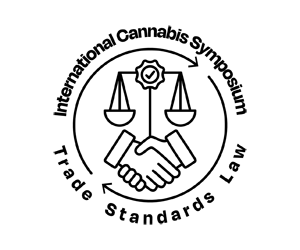99 Mass. App. Ct. 670, 173 N.E.3d 395 (2021)
Overview
Existing zoning laws of the municipality need to be looked at prior to establishing a recreational and/or medical marijuana grow sight. In this specific case, the municipality allowed for a commercial horticulture establishment and marijuana falls under the category of “an indoor commercial horticulture/floriculture establishment (e.g. greenhouse)” and it is a “use allowed by right”.
Background
The piece of property, which was nearly 95 acres, was previously used for the commercial growing and processing of apples. The plaintiffs purchased the lot of land. As part of the purchase the plaintiffs proposed that they would construct a marijuana grow sight. The project would “consist of a one million square foot indoor marijuana growing and processing facility, including 860,000 square feet of closed greenhouses; a 130,000 square foot postharvest processing facility; and a 10,000 square foot cogeneration facility.” Furthermore, the marijuana would “be grown hydroponically without chemical pesticides in closed greenhouses that would carefully maintain environmental conditions, filter air contaminants, and mitigate odors.” The proposal also included information about the sights expected electrical, water and waste production.
In 2016 the State of Massachusetts legalized recreational marijuana and through their legislation codified the established and regulations of marijuana grow sights. As part of the legislation, municipalities, cities, or towns could “impose reasonable local control over the time, place, and manner of marijuana establishment operations, and a proposed marijuana establishment must comply with local bylaws and ordinances.”[1]
In 2017 the law was amended to provide that “nothing in this section shall preclude a municipality from establishing zoning by-laws … which allow commercial marijuana growing and cultivation on land used for commercial agriculture, aquaculture, floriculture, or horticulture.”[2]
Issue
There are specifically two issues here:
- Was the marijuana cultivation and processing plan in violation of the municipalities’ ordinance?
- What is the line between “light manufacturing” and “commercial horticulture”?
Ruling
The court held that the proposed plan was not in violation of the municipalities because the plan, including the smaller processing building, fell under the category of a “commercial horticulture” plan. Furthermore, the municipal bylaw expressly allows “indoor commercial horticultural uses and contains no limit on the size of an allowed commercial greenhouse or accessory structures.”
Lastly, the court explained that the to determine whether the project was a manufacturing project or a growing project, the court must partake in a “fact-dependent inquiry comparing net effect of uses and evaluating reasonableness of relationship between primary and incidental uses.” In other words, the test of whether a project is a manufacturing or a growing operation, is reasonableness.
Analysis
First, the court looked at municipal zoning regulations to determine what it explicitly entails. They looked at the time the bylaw was instituted and whether the regulations, prior to the enactment of the zoning freeze, explicitly allowed the Board of Charlton to ban the facility.
The court explained that the plan was by the municipal zoning enforcement officer and was determined to be “allowed by right”. The court determined that, “b]ased on the accepted definitions and the language of G. L. c. 61A, §§ 1-2, and G. L. c. 128, § 1A, the growth or cultivation of marijuana is, within the plain meaning of the word[s], an agricultural use.” Therefore, the facility and proposed plan was for agricultural use.
The court further explained that the project consisted of 86% indoor hydroponic grow with the other 13% consisting of post-harvest manufacturing. This breakdown, in conjunction with the reasonableness test proffered in Pellegrino v. City Council of Springfield, 22 Mass. App. Ct. 459, 464-465, 494 N.E.2d 1036 (1986) demonstrated that the manufacturing component of the facility was a mere “incidental or auxiliary” aspect to the larger facility.
In fact, the court explains that “those activities [referring to processing and packaging the dried flower] go hand in hand and that processing and packaging are reasonable and incidental to the primary use of growing marijuana.” Processing is specifically defined as, “steps that separate marketable aspects of the cannabis plant to be either dried and sold as ‘[f]lower’ or extracted and sold as ‘[o]il.’”
Conclusion
The judge concluded that “[b]ased on the accepted definitions and the language of G. L. c. 61A, §§ 1-2, and G. L. c. 128, § 1A, the growth or cultivation of marijuana is, within the plain meaning of the word[s], an agricultural use.” He explained that “[t]his use is properly classified as an indoor commercial horticultural/floricultural establishment within the meaning of § 3.2.2.1 of the bylaw.”
He further explained that the grow portion of the sight was the “majority” of the proposed property, and the production and post-harvest processing activities was a mere “minor” aspect of the proposed sight. Therefore, the project was an “indoor horticulture” facility, and not limited by the municipal bylaw restriction.
Takeaways
- When determining whether a project is an agricultural project or a manufacturing project, the Massachusetts courts will look at the reasonableness of the manufacturing aspect in relation to the growing portion of the project.
- If a horticulture/agriculture plan consists of at least 86% grow, there is a precedent to demonstrate that the other 14% can consist of a post-harvest and packaging facility.
- When looking at the zoning regulations of a municipality, pay close attention to the verbiage used. Zoning regulations will be strictly construed for their meaning. Therefore, if you are writing the regulations, utilize specific words and if you are trying to develop a marijuana plan, look at the specific language used to see w
[1] G. L. c. 94G, § 3 (a)
[2] St. 2017, c. 55, § 7

Alexander Hymowitz
Alexander is a third-year law student at New York Law School. Alex is interested in the legacy market, social-equity and regulatory scheme differences between states.




















